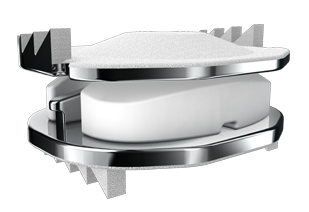Full Range of Orthopaedic Surgery Procedures
From severe disease to traumatic injury, our world-class orthopaedic
surgery team provides advanced surgical intervention with consistently
successful results.
- Arthritis: Severe cases of arthritis sometimes
require orthopaedic surgery to alleviate pain and swelling. These
procedures can bring relief through a variety of techniques including
total joint replacement, removal of damaged or diseased joint lining,
joint fusion and joint realignment.
- Arthroscopy: Often associated with knee
surgery, arthroscopy involves the use of a small camera inserted into a
joint area to view, diagnose and treat joint problems. Arthroscopic
surgical instruments can be used in conjunction with the camera to
complete the surgery with minimal pain and scarring.
- Hand and Upper Extremity: Our hand surgeons perform orthopaedic surgeries to treat
various conditions such as carpal tunnel syndrome, sports injuries, and
severe cuts. Also, Westchester Medical Center, the flagship of the WMCHealth Network, is the only hand replant center between Albany and New York City.
- Joint Replacement: Some conditions may merit
total joint replacement. Joints that are commonly replaced are knees and
hips, although ankles, fingers and other joints may also be affected.
- Spine and Scoliosis: Scoliosis is a
disfigurement of the spine which may be caused by disease or injury. We provide surgical intervention for severe
scoliosis which is not treatable with braces.
- Sports Medicine: Sports medicine
is the prevention, diagnosis and treatment of injuries sustained as a
result of sports activity. The orthopaedic team features sports medicine specialists.
 Mobi-C is the first FDA-approved cervical disc for both one and two level indications. Patients with injuries to their upper spine will experience significantly better range of motion than with traditional fusion surgery.
Mobi-C is the first FDA-approved cervical disc for both one and two level indications. Patients with injuries to their upper spine will experience significantly better range of motion than with traditional fusion surgery.
Before artificial discs were available, patients would traditionally receive an Anterior Cervical Discectomy and Fusion (ACDF) procedure to alleviate the pain from a herniated disc. In a fusion surgery, the disc is removed and either a bone spacer or a plastic implant will be placed in the disc space to restore disc height and remove pressure on the pinched nerves or spinal cord. A metal plate and screws can be placed on the front of the neck to hold the implant in place. The result of this procedure will be a segment that no longer moves, or is “fused”. The potential downside of a fusion procedure, in addition to the loss of motion, is that it can create additional stress on the spinal levels above and below it. This can cause degeneration at those levels and potentially result in another future surgery.
An artificial disc like Mobi-C is an option instead of a fusion that will also be placed inside the disc space to restore height and remove pressure on the pinched nerves. However, the Mobi-C device is designed to allow the neck to maintain normal motion and potentially prevent the adjacent levels from degenerating, possibly preventing future surgeries.
Mobi-C History
The Mobi-C Cervical Disc is one of the most widely used cervical
discs in the world. First implanted in France in November 2004, Mobi-C
has been implanted in more than 40,000 spinal levels in 25 countries.
A total of 599 patients were involved in the Mobi-C U.S. clinical
trial, which represents the largest concurrent clinical trial ever
conducted for cervical disc replacement. Mobi-C received FDA approval in
August of 2013, making it the first cervical disc with both one and two-level indications.
Mobi-C – How it Works
Mobi-C contains patented mobile bearing technology that allows the
polyethylene core to slide and rotate inside the disc for
self-adjustment to the cervical spine movements. This means that Mobi-C
can react to the normal motion in the cervical spine.
Mobi-C provides bone sparing fixation without chisel cuts into the
small vertebral bodies of the cervical spine, making it bone sparing.
Learn More
For more information, contact Yigal Samocha, MD, at 845.896.4178